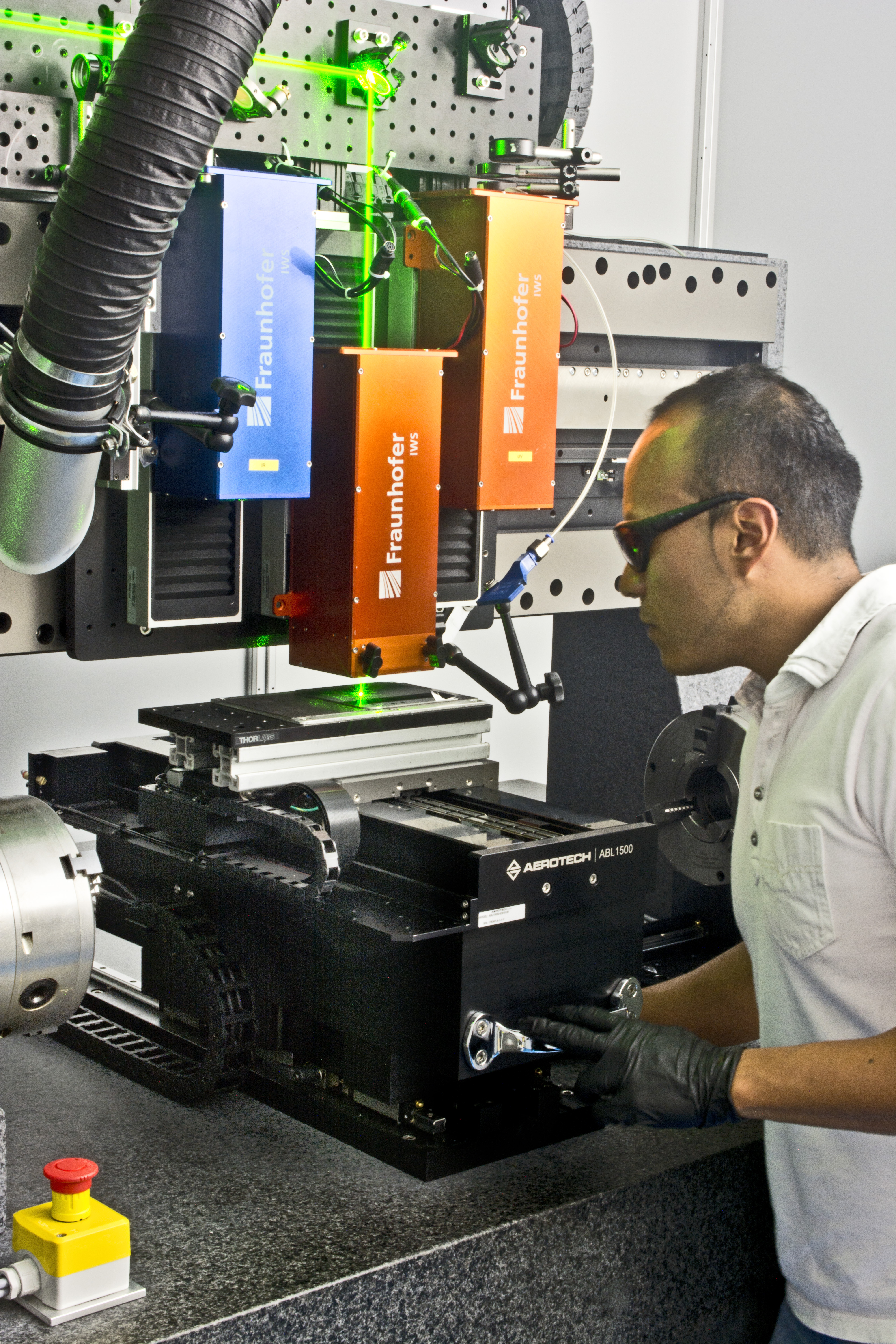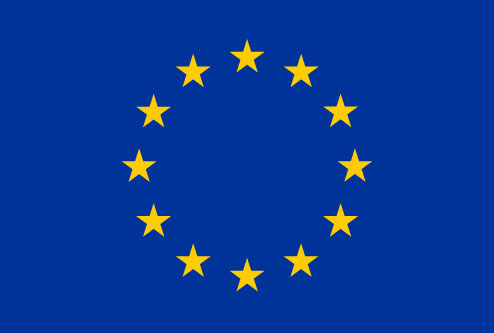No more cleaning: Fraunhofer IWS, TU Dresden and Airbus produce water- and dirt-repellent nanostructures on aircraft surfaces
Lasers make the lotus effect on aircraft
Filigree engravings on external surfaces of aircraft are intended to ensure that airflow remains smooth and drag on the aircraft low. For this, engineers at the Fraunhofer Institute for Material and Beam Technology IWS, the Technische Universität Dresden and Airbus have developed a laser process that produces textured surfaces at high throughput making surface contamination more difficult.


The European project “Laser4Fun”, in which the Fraunhofer IWS and Airbus collaborate, aims to achieve tangible benefits for airlines and passengers: nanostructures on selected surfaces of aircraft – barely visible to the naked eye – should repel water, insects, dirt, and in general any unwanted contamination.
Preventing contamination accumulation on aircraft surfaces
“With our process, we want to prevent any form of contamination on aircraft surfaces,” Dr. Tim Kunze said, who heads the Group Surface Functionalization at IWS. “But it would also be a success if we could at least reduce it considerably.” This can be done for instance using micro- and nanostructured surfaces. However, the current state of the art is that the structuring needs to be combined with other technologies. Not so for the IWS solution. To understand what the Fraunhofer engineers have used for developing the water- and contamination repellent concept think of a simple physics experiments from high-school: a beam of light passing a double-slit forms a periodic pattern of bright and dark lines – a so-called “interference pattern”.
Laser interference patterns carve pillars and trenches into titanium
Such an interference pattern is generated by the new DLIP optical modules from Dresden. “DLIP" stands for “Direct Laser Interference Patterning” and translates to as much as “direct interference pattern generation by laser”. Special optics split a laser beam into several partial beams, which are later combined on the surface to be structured. This trick can be used to create very precise and controllable light patterns. If the interference pattern is focused onto a titanium sheet, the high-energy laser light melts and ablates the material in the bright areas, while it leaves the material unaffected in the dark areas. As a result, Fraunhofer and TU Dresden scientists produce microstructures over the titanium surface. Viewed under a microscope these resemble microscopic halls of pillars or corrugated iron roofs. The distances between the pillars can be set between 150 nanometers (millionths of a millimeter) and 30 micrometers (thousandths of a millimeter). The goal: Through the nano- and microstructures on the metal, water droplets can no longer wet the surface and stick to it. Because they do not find enough “grip” on the surface, they roll or slide off. This structure is a mimic from nature and has been known as “lotus effect” for many years.
Existing Lotus-like coatings age quickly and are partly not fitting newest environmental regulations
Such “superhydrophobic” (i. e. water-repellent) surfaces were also produced by other technologies. Today, most lotus-like coatings on metal sheets, glasses or bathroom fittings are still produced by special processes. The main advantage of these coating methods is that they allow treating large areas. However, the coatings age over time, can easily be damaged and do partly not comply with new EU environmental regulations coming into force. The structures produced by the DLIP method, however, may well last years and do not raise environmental concerns.
Speed disadvantage overcome with world record
Lotus-like nano- and microstructures could be produced by laser technology, but very slowly so far: the laser beam had to “draw” each groove or column in succession like with a pencil. That would take too long for a large airfoil, for example. Thanks to the new DLIP interference technology, the Fraunhofer and TU Dresden researchers were able to significantly increase the processing speed: Depending on whether titanium, polymers or other materials need to be structured, the DLIP optics can do almost one square meter per minute. “This is a world record,” emphasizes Prof. Andrés Lasagni, who laid the cornerstone of the working group at Fraunhofer IWS up to 2017 and now holds the professorship for laser-based methods for large-scale surface structuring. “Together with our colleagues from IWS, we have developed the largest DLIP system worldwide, located at the TU Dresden today. This system, which was supported by the Excellence Initiative of the German Research Foundation (DFG), facilitates the treatment of large areas at high throughput. In addition, the DLIP laser heads can be integrated into standard industrial machines allowing even medium-sized companies to access this technology today.”
Flight tests with the Dresden-made Lotus-effect coatings
All this recommends the new technology developed jointly by Fraunhofer IWS and TU Dresden for the aerospace industry. Airbus engineers are currently flight-testing laser-structured coatings on an aircraft wing. “We have provided a titanium test surface with our columnar structure,” reports Tim Kunze. “The colleagues at Airbus have added a chemical treatment to the coating and fixed it to the leading edge of a wing.” Now the DLIP-produced coating must show its potential in real-life cases. Elmar Bonaccurso, Material Scientist at Airbus Central R&T, puts it like this: “Flight-testing in various operating conditions and coating inspections at regular intervals are especially useful for investigating the durability and functionality of such water and contamination repellent coatings that have already shown to perform very well in the laboratory.”
Laser structure seals make life difficult for counterfeiters
Meanwhile, Dresden-based Fraunhofer and TU Dresden engineers are already researching other applications for their Lotus-like nanostructures. Not only are they able to generate water-repellent surfaces, but also to ensure that water or other liquids wet selected areas, thus becoming “hydrophilic” or “lyophilic”. Hard-to-copy security seals can also be generated. This technology can therefore be used, for example, to mark forgery-proof license plates or to increase the bio-compatibility of dental implants. “Properly structured implant screws could be better accepted by the body,” Prof. Lasagni hopes. “And that would mean fewer complications for the patient.”
- More information on micro- and nano-technologies (light-and-surfaces.fraunhofer.de)
- For more information please visit Fraunhofer Institute for Material and Beam Technology IWS (iws.fraunhofer.de)